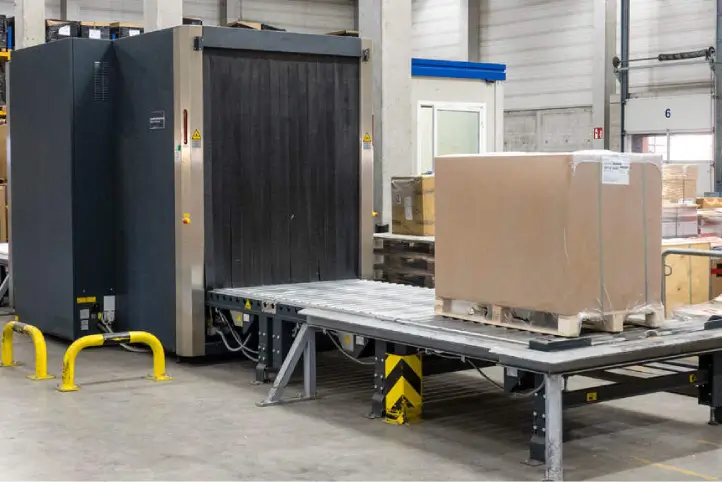Air cargo security is critical to the global supply chain, protecting passengers, crew, aircraft, and cargo from unlawful interference. However, air cargo screening poses many challenges, such as the diversity of cargo types, sizes, and shapes, the complexity of the logistics network, the high volume and speed of shipments, and the cost and availability of screening equipment and personnel.
This blog post will provide a comprehensive overview of the screening methods currently employed in the industry and highlight their strengths and limitations. We will also discuss some of the initiatives and innovations being developed to enhance air cargo security in the future.
Screening Methods
Screening identifies and detects dangerous items or substances that may be used for unlawful interference. Air cargo can be screened using several methods, depending on the cargo’s type, size, and configuration, as well as the regulatory requirements and operational constraints. The main techniques are:
Physical (Visual) Screening
The screening involves inspecting the cargo by sight to detect any signs of tampering or anomalies. It is usually done alongside other methods such as X-ray screening. It is a simple and low-cost method, but it has limited effectiveness and reliability, as it depends on the skill and vigilance of the screener.
Advanced Imaging Technology
Advanced imaging technology, including millimetre-wave scanners and terahertz imaging, offers non-intrusive screening methods for air cargo. These technologies produce high-resolution images that reveal the shape and density of objects within cargo containers. This enables security personnel to identify potential threats without physically opening the cargo, streamlining the screening process while maintaining security.
Radiation Detection
Radiation detection systems monitor air cargo for abnormal levels of radiation that might indicate the presence of radioactive materials or nuclear devices. These systems use sensitive detectors to identify and quantify radiation emissions. By identifying potential radiological threats, these screening techniques contribute to safeguarding air cargo and the surrounding environment.
Dual-View X-ray
This method involves scanning the cargo with X-ray radiation from two different angles to produce two images that a screener or an automated system can analyse. It is a fast and efficient method that can detect metallic and non-metallic threats, such as explosives, weapons, or drugs. However, it has some limitations, such as the need for high-energy X-rays to penetrate dense or oversized cargo, which may pose health and safety risks. It may also have difficulty distinguishing between organic materials or detecting low-density threats.
ETD (Explosive Trace Detection)
This air cargo security screening involves swabbing the surface of the cargo or sampling the air around it and analysing it with a device that can detect traces of explosives or their precursors. It is a sensitive and specific method that can identify the type and quantity of explosives.
Initiatives and Innovations
The air cargo industry and its stakeholders are constantly working to improve air cargo security by developing new initiatives and innovations to address the challenges and gaps in screening capabilities. Some of these are:
Advance Cargo Information (ACI)
ACI involves providing standard information about the cargo before arriving at the destination airport, such as its origin, destination, consignor, consignee, description, weight, and security status. This information can help customs authorities assess the cargo’s risk level and facilitate its processing and clearance. It can also reduce delays, costs, and congestion at airports.
Consignment Security Declaration (CSD)
This initiative provides an audit trail of how, when and by whom specific cargo shipments have been secured along the supply chain. It includes information such as the screening methods used, the cargo’s security status (e.g., known consignor or regulated agent), and any changes or transfers that occurred during transit. This information can help regulators and operators verify the cargo’s security and recognise and accept the security measures applied by other parties.
Innovation in Screening Technology
Innovation in Screening Technology involves developing and deploying new or improved screening equipment and methods that can enhance the detection and deterrence of threats in air cargo. For example, Smiths Detection has recently introduced a breakthrough technology called HI-SCAN 145180-2is, which can scan large and dense loads with high-energy dual-view X-ray and produce high-quality images that an automated system or a screener can analyse.
This technology can improve the effectiveness and efficiency of screening and reduce the health and safety risks associated with high-energy X-rays.
Enrol in an Air Cargo Security Course!
Air cargo security is a vital aspect of the aviation industry that requires constant vigilance and improvement. Effective screening techniques can help prevent and detect threats, protect lives and property, and ensure international standards and regulations compliance.
If you want to learn more about air cargo security and how to apply the best practices in your work, consider enrolling in an air cargo security course from the Australian Training Institute. A course like this can provide you with the knowledge, skills, and certification you need to enhance your career and contribute to the safety and security of the air cargo sector. Take advantage of this opportunity to advance your professional development and join the global network of air cargo security experts.
Contact us on 07 3269 5005 or visit our website for more information!
AVI20118 – Certificate II in Transport Security Protection (Cargo)



